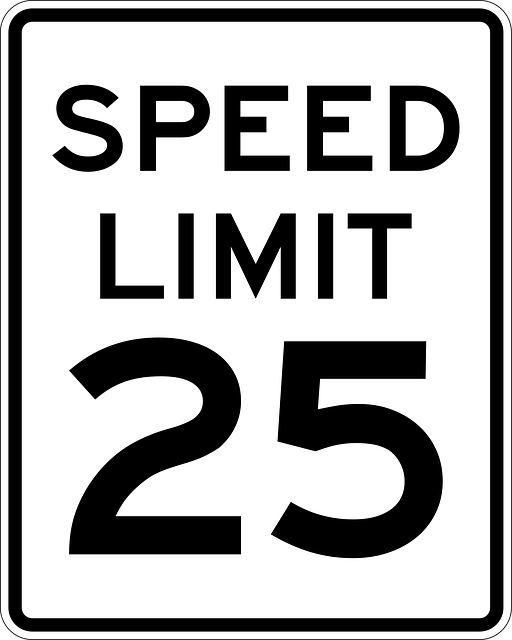TradingView Watchlist Limit Explained: A Comprehensive Guide for Traders
Author: Jameson Richman Expert
Published On: 2025-09-06
Prepared by Jameson Richman and our team of experts with over a decade of experience in cryptocurrency and digital asset analysis. Learn more about us.
The TradingView watchlist limit is a fundamental constraint that significantly impacts how traders monitor markets, execute strategies, and manage their portfolios. While on the surface it appears as a straightforward technical restriction—limiting the number of assets a trader can track—its deeper implications influence every aspect of active trading. From trading efficiency and decision-making to risk management and strategic planning, understanding these limitations allows traders to optimize their workflows and avoid pitfalls. As an experienced trader and content creator, I’ve encountered firsthand how these limits can subtly shape trading habits. This comprehensive guide explores the intricacies of TradingView’s watchlist limits, providing detailed strategies, insights into external tools, and practical tips to help you navigate and transcend these constraints effectively.

Understanding the TradingView Watchlist Limit: What Traders Need to Know
At its core, the TradingView watchlist limit defines the maximum number of assets, symbols, or securities that can be actively tracked within a single watchlist or across multiple watchlists, depending on your account tier. According to TradingView’s official documentation and user reports, free-tier accounts are limited to 50 symbols per watchlist, which can pose a significant restriction for traders following a broad array of assets—be it stocks, crypto, forex, commodities, or indices.
Paid plans—namely Pro, Pro+, and Premium—expand these limits, supporting up to 200, 500, or even more symbols respectively. While this may seem sufficient for most individual traders, in practice, active monitoring of large asset universes, especially in cryptocurrency markets where hundreds or thousands of tokens exist, quickly hits these ceilings. For example, a crypto trader tracking multiple altcoins, stablecoins, and tokens for arbitrage or momentum trading may find themselves constrained, forcing them to make tough decisions about which assets to prioritize.
These limits are primarily designed to maintain platform performance, stability, and responsiveness—particularly during volatile market conditions where multiple real-time updates occur. However, they also introduce practical challenges that, if not managed properly, can hinder trading effectiveness. Recognizing these constraints early on enables traders to develop more efficient workflows, implement better asset organization, and leverage external tools to extend their market monitoring capabilities.
Why the Watchlist Limit Should Matter to Traders
A well-constructed watchlist is the backbone of an effective trading strategy. It allows traders to stay abreast of price movements, technical signals, and fundamental developments—crucial for timely entries and exits. When limited by a strict watchlist capacity, traders face several tangible challenges:
- Missed Opportunities: Limiting the number of assets means potentially overlooking promising setups in emerging markets or less-followed assets, which could lead to missed profits.
- Clutter and Reduced Clarity: Overloading a limited watchlist with too many assets makes it harder to analyze charts quickly, especially during high-volatility periods when rapid decision-making is essential.
- Increased Time and Cognitive Load: Regularly reorganizing watchlists—adding, removing, or archiving assets—diverts focus from analysis to administrative tasks, delaying reactions to market moves.
Early in my trading career, I struggled with these limitations—adding numerous assets without a clear system led to analysis paralysis and missed signals. Over time, I realized that quality trumps quantity; a carefully curated watchlist focusing on high-probability assets fosters disciplined trading and sharper decision-making. Understanding and respecting these limits encourages strategic asset selection, which is crucial for maintaining peak trading performance under constraints.
Strategies to Optimize Your Watchlist Management within TradingView
To maximize efficiency within TradingView’s watchlist constraints, traders need to adopt deliberate organizational and strategic practices. Here are advanced methods to help you optimize your asset monitoring system:
1. Clarify Trading Objectives and Focus Areas
Begin by defining your core trading or investment goals—are you swing trading stocks, scalping cryptocurrencies, or holding long-term positions? Based on these objectives, identify your priority assets—liquidity, volatility, and relevance are key factors. For example, I focus on high-volume altcoins for day trading but keep a separate list of long-term holdings in blue-chip stocks. This segmentation ensures you allocate your limited slots efficiently, emphasizing high-accuracy signals rather than spreading yourself thin across too many assets.
2. Use Folders and Hierarchical Organization
TradingView allows creation of folders within watchlists, enabling logical grouping of assets—such as “Crypto,” “Forex,” “Tech Stocks,” “Emerging Markets,” etc. While the total symbols across all folders are capped, this structure allows rapid navigation and contextual analysis. Enhance this by applying visual cues like color coding or custom icons to distinguish assets quickly, particularly during fast-moving sessions. For instance, differentiate high-volatility cryptos from stable stocks by color, ensuring you can focus your attention accordingly.
3. Maintain a Routine Watchlist Review and Pruning System
Set regular intervals—weekly or biweekly—to review your watchlist. Use clear criteria to remove assets that no longer meet your trading thresholds, have low liquidity, or show diminished trading signals. This disciplined pruning prevents clutter, ensures your focus remains on actionable assets, and maintains a manageable list size. Over time, this practice refines your market picture, enabling smarter trade entries and exits.
4. External Data Integration and Broader Market Monitoring
Leverage external platforms—like Binance, Kraken, Bitfinex, and Mexc—that support extensive asset universes and offer advanced filtering, sorting, and alert features beyond TradingView’s limits. These platforms can support thousands of cryptocurrencies, commodities, or forex pairs, providing a comprehensive market overview. By linking these platforms with TradingView through APIs, webhooks, or manual cross-referencing, traders can identify high-conviction assets externally and only import the most promising ones into TradingView for detailed analysis. For example, monitor hundreds of tokens on Binance and selectively add the top 10-20 for charting and alert setup, thus maximizing your monitoring capacity within TradingView’s constraints.

Enhancing Monitoring Beyond TradingView’s Limits: External Platforms and Automation
To transcend platform limitations, many traders turn to external tools and automation solutions that support large-scale asset surveillance. These platforms provide powerful filtering, sorting, alerting, and data aggregation capabilities, enabling traders to maintain a holistic market view. Here are key options:
- Binance: Offers extensive watchlists, real-time data streams, and API access. Using Binance’s API, traders can build custom dashboards, automated alerts, and portfolio trackers that monitor thousands of assets. Selected top assets can then be imported into TradingView for detailed charting.
- Kraken, Bitfinex, and Mexc: Similar to Binance, these platforms support large asset pools, advanced filtering, and API integrations—facilitating comprehensive monitoring with minimal resource overhead. Automation scripts can flag emerging opportunities, which you can then analyze within TradingView.
- Third-party tools like Coinigy, TradingView Screener, or custom dashboards: These solutions aggregate data from multiple exchanges, enabling multi-asset scans, trend detection, and alerts. By automating the filtering process, traders reduce manual effort and focus on high-value opportunities.
Integrating these external sources ensures you do not miss critical market movements simply because of platform-imposed symbol limits, and allows you to maintain a broad market perspective while conducting in-depth analysis selectively within TradingView.
Advanced Tips for Maintaining a Focused, High-Performance Watchlist
- Set Quantitative Asset Criteria: Use filters such as minimum trading volume, volatility thresholds, recent price change percentages, and fundamental metrics. Automate these filters where possible to keep your watchlist relevant and manageable—e.g., only include stocks with daily volume above $1 million or cryptos with volatility over 10% in the past week.
- Automate Alerts and Notifications: Program TradingView alerts for significant price levels, technical indicator signals, or trend reversals. This reduces manual monitoring effort, ensuring you receive timely updates on key assets without cluttering your watchlist.
- Segment Assets by Strategy or Timeframe: Maintain separate watchlists or folders for different trading styles—short-term scalping, swing trading, or long-term investing—to prevent analysis overload and stay focused on relevant signals.
- Use Preset Templates: Save watchlist templates tailored for specific market conditions or asset classes to quickly deploy appropriate setups, maintaining consistency and saving setup time.
Turning Limitations into Strategic Advantages
While the watchlist limit can initially feel restrictive, it presents a valuable opportunity to develop discipline, strategic focus, and analytical precision. By meticulously selecting high-conviction assets, organizing your assets systematically, and leveraging external tools, you can transcend platform constraints and improve trading performance.
This discipline encourages traders to prioritize quality over quantity—focusing on assets with the highest potential and relevance to your trading plan. It also fosters routine review and pruning, sharpening your market intuition and decision-making skills over time. Many successful traders see these limitations not as obstacles but as catalysts for better trading routines and more deliberate analysis.
Incorporating external platforms like Binance, Mexc, or Coinigy enhances your overall monitoring capacity, enabling you to observe broader market dynamics while maintaining detailed focus within TradingView. This integrated approach maximizes both breadth and depth—critical for navigating complex and volatile markets.
Ultimately, the goal isn’t to track every asset but to develop a disciplined, strategic approach to asset selection. This mindset leads to more consistent performance, reduced cognitive overload, and a more sustainable trading routine—transforming platform limitations into a competitive edge.
For further insights into features, advanced trading strategies, and market analysis, consider exploring resources like Ethereum price prediction 2026 and comprehensive guides such as How to short crypto in Canada.